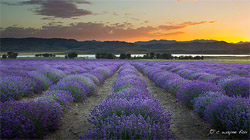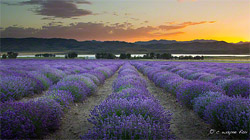
Discussing the topic of growth with employees at Young Living Farms, in Mona, Utah they agree that the appeal of Nephi and Mona comes from what you don’t see: an absence of billboards and traffic jams, big box stores and tract homes. Instead, people want to live in the quiet valleys around farms, rivers and lakes in the still largely rural West.
From my perspective, I believe I understand the problem, but what do I know? I’m an urbanite. Still, evident along the highway are former farms owners subdividing their properties into 1/2 acre lots, offering cheaper housing than neighboring cities to the north with only a bit longer commute. Great for farmers. They cash in on their investment. Great for large families. The luxury of a big, inexpensive house with a huge yard to grow a garden and provide a play area for their kids.
But the problem with this model is that it decimates farmland and open space. Four traditional-sized lots can fit onto a half acre. Unless things change it is likely that in the next 20 years Mona, Santaquin and Nephi will go the way of Pleasant Grove, American Fork and Eagle Mountain. “You can’t stop progress,” I keep hearing with a sigh that the fate of these towns is a foregone conclusion, but can’t “democracy” somehow trump capitalism and still protect open space and the small-town quality of life? County councils in these unincorporated areas should be working with state land managers to answer this question. If not, sadly ma-and-pa shops will continue be traded for Applebees and Sizzlers, and open space traded for asphalt. In the meantime, enjoy the immaculate scenery and great homegrown culture while it’s still around. Get off the beaten path once in a while and visit Utah’s great small towns.
A History of Green Belt Preservation
This issue is nothing new. In post WWII Great Britain Londoners realized that their greenbelt and farms were disappearing at an alarming rate. They determined the best policy would be to allocate protected green belt area around cities for residents to easily escape the confines of the city. Reading the Times in the UK I found a great quote fromWilliam Morris saying:
“London is a sore, swallowing up with its loathsomeness filed and wood and heath without mercy and without hope.” Another fitting quote from William Cobbett, describing the capital as “the Great Wen– suppurating boil contaminating the healthy countryside .” The result of the public and literary outcry was that the countryside surrounding not only London, but most metropolitan areas in Europe, is preserved. Farmlands, grazing areas and green pastures remain everywhere and sprawl is curbed.
The negative consequence is that developers are forced to build more houses on less land, which results in more condos fewer houses in cities and higher housing prices. Even surveyed Londoners say they would prefer to live in houses with backyards. But as cities world-wide have seen a resurgence since the world-wide housing bubble (that’s right the housing bubble extended also to the UK) residents have come to understand the compromise: the best paying jobs are in the city, but space must be sacrificed for livelihood and liesure to provide a good balance between City and rural land. America was founded on the premise that we can have it all. But if individual family has it all, then we leave little room for the vast praries, farms, fields and access to nature that essentially provides.
The German and Russian model of having both a city apartment and a dacha or country mini-house with a large garden is the best method for having it both ways. Utah Stories has written two articles on this topic and one article examining the transit/ green belt preservation model found in Munich Germany.
Mini houses offer some big advantages for City Dwellers
Munich Germany Smart Growth Marvel






